May 18 - 24, 2014: Issue 163
Vanity is Killing Our Oceans and All In Them - No More Microbeads
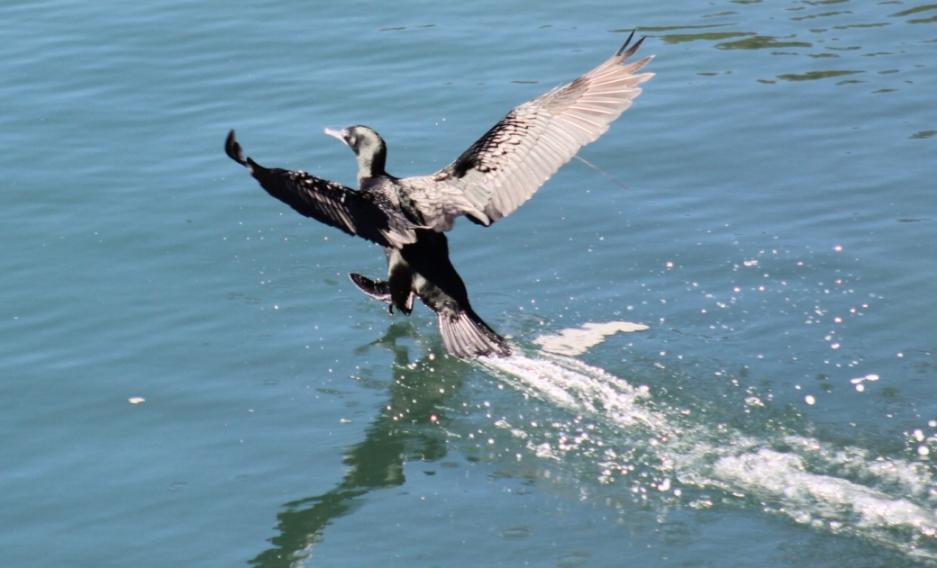
Cormorant landing at Bonnie Doon Wharf this week - picture by A J Guesdon, 2014.
Vanity is Killing Our Oceans and All In Them
In Pittwater it is easy to see how plastics of all kinds, bags, bottles and bottle caps, discarded bait wrappings, bits of plastic twine tied around balloons and all manner of refuse carelessly left behind can be returned on the incoming tide. During the past few weeks a few announcements regarding micobreads and ‘plastic confetti’ from our Pittwater MP – Hon. Rob Stokes, from CSIRO and from Fauna & Flora International may make you think twice about purchasing cosmetic scrubs that contain ‘microbeads’.
There are alternatives to using these products – a homemade oatmeal scrub is far better for your skin and can be food for your chooks after use, or simply rub some sand over your face next time you’re at the beach…
This week we’d like to bring you up to date on another plastics problem that is killing our ocean and all in it so we all become more mindful of what is happening to the aquatic world we all revel in and how to be better custodians of this watery paradise.
____________________________________________
PLASTIC MARINE POLLUTION TO BE TACKLED
Rob Stokes MP Minister for the Environment Minister for Heritage Assistant Minister for Planning - Thursday, 8 May 2014
An initiative to protect oceans and marine life from micro-plastic pollution, which kills seabirds and is ingested by sea-life, was launched today at the Royal Botanic Gardens.
Environment Minister Rob Stokes joined HRH Princess Laurentien of the Netherlands, the President of Fauna & Flora International (FFI), to launch the organisation’s initiative to team up with other NGOs, governments and businesses to work to eliminate sources of micro-plastic pollution in Australia.
“FFI is collaborating with businesses working in Australia and Australian cosmetic and beauty care producers to seek the removal of micro-plastic pollutants from their products,” Mr Stokes said.
“Micro-plastics measure less than 5mm, include non-biodegradable plastic found in many products such as shampoos, exfoliants and shower gels go down our sinks straight into the ocean.
“Once seabirds ingest micro particles it can lead to blockages, choking and starvation.
“Scientists around the world are worried about the health implications to humans who eat seafood contaminated by micro-plastics.
“When microplastics enter the marine environment, due to their small size and ability to float, they are unlikely to ever fully degrade.”
“FFI also aim to introduce a new free smartphone app to Australia later this year which will make it possible for consumers to scan a product barcode for the presence of plastic.”
Also today, as a symbol of our collaborative conservation efforts to maintain plant biodiversity, the Princess planted the Chrysophyllum imperiale tree which is listed as endangered on the IUCN Red List of Threatened Species.
The tree, from the rainforests of Brazil, is rare in its natural habitat and is unlikely to found outside of a small number of botanic gardens.
Today, the world’s botanic gardens grow over 30 per cent of the world’s known plants
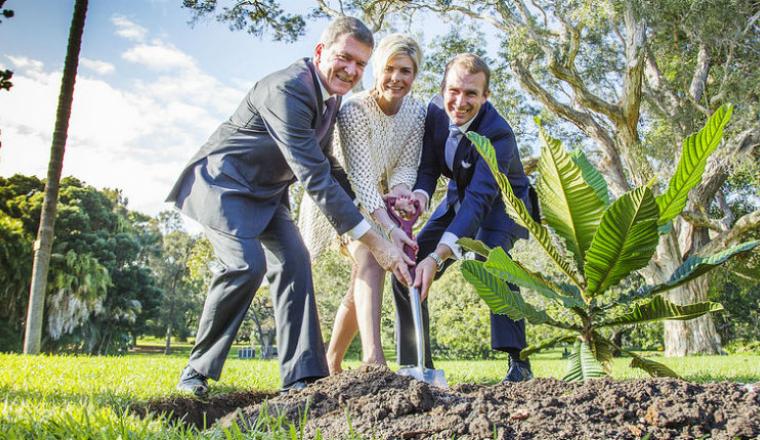
Princess Laurentien of the Netherlands (and FFI president) planted an endangered Chrysophyllum imperiale tree with Executive Director – Sydney’s Parklands and Botanic Gardens, Kim Ellis and Environment Minister, Rob Stokes.
__________________________________________________
Please note that the APP referred to below is to be updated so it will allow you to scan a product’s barcode for all the information to come up automatically - rather than looking through a list.
2,000 plastic beads? Not in my face scrub…
courtesy Fauna & Flora International, 7 May 2014
With a simple experiment, Fauna & Flora International’s marine plastics project officer, Tanya Cox, demonstrates why tiny plastic microbeads pose such a big threat to our oceans.
When it comes to beauty products, the choice is overwhelming. Walking into cosmetic stores can be daunting to even the most avid of shoppers…where do you start? Do you go for the tried and tested? Maybe you go for products with reassuringly familiar names, and brands with recognisable logos? Perhaps you delve a little deeper, seeking out products for certain skin types or sensitivities.
Whatever your preference, I urge you to make one vital choice…make sure you’re buying plastic-free!
In the 1960s a US patent was published that promised the holy grail of cosmetic properties including ‘colour, lack of irritation, adhesion, absorbency and even coverage’. The special ingredient being promoted: pulverised plastics in place of natural talc in cosmetic powders.
But what of the untold story? Did anyone anticipate that fifty years later these ‘hidden’ plastics in personal care products would become so widely used that research scientists now regularly find these tiny pieces of plastic in the world’s oceans?
The truth behind the marketing
The use of plastic microbeads in products such as exfoliators has become so widespread that there are now literally hundreds of products boasting “gentle, exfoliating action with microbeads.” What they don’t tell you in advertising campaigns is that this plastic does not disappear after use. It doesn’t degrade. And, critically, it doesn’t necessarily perform any better than non-plastic alternatives.
It recently came to our attention that one of the world’s leading multinational corporations has released a product that promises no fewer than 2,000 microbeads per application. If we make a conservative estimate that each tube of this product contains at least 20 applications, this means that potentially up to 40,000 pieces of plastic will be washed down the bathroom sink after performing their ‘scrubby magic’ making their way directly to our rivers and seas.
Once in the marine environment, microplastics are impossible to clear up. They attract and accumulate toxic chemicals and are readily eaten by a wide range of marine life.
To illustrate just how small and how abundant these microbeads are, I set to work filtering them out from the product in question…
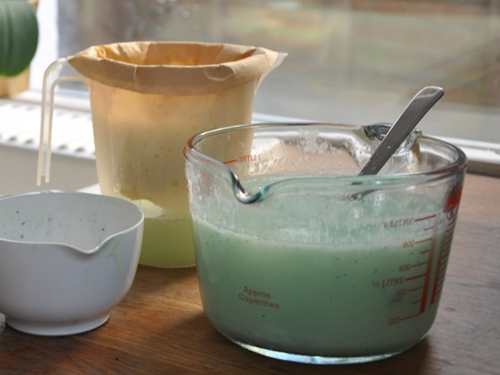
In this experiment, the offending product was first mixed with water...
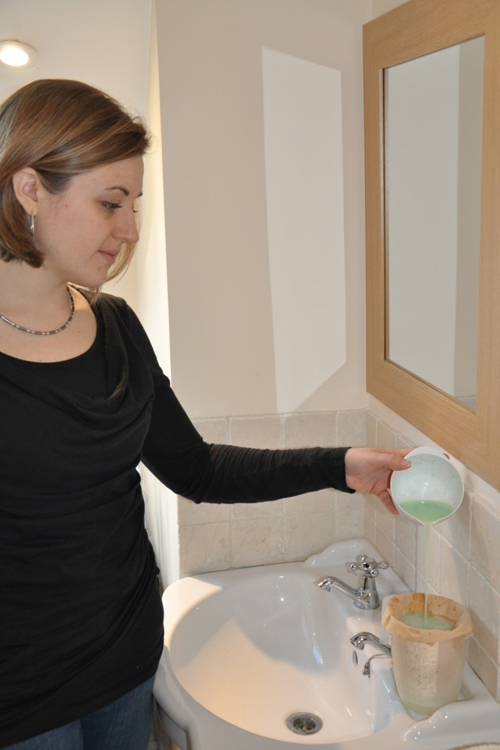
...Next, the mixture was passed through two layers of filter paper...
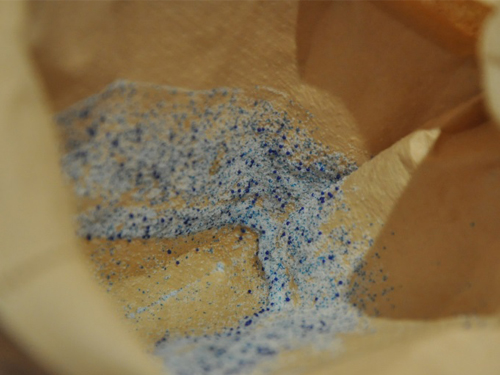
Once the mixture had passed through the paper, the plastic microbeads were left behind - this picture shows how many of these microplastics are contained in a fairly small amount of the product. Credit: Tanya Cox/FFI.
This was not the first time I’ve performed such an experiment but what really struck me about this exercise was just how easy it was for these microbeads to escape. Even when I doubled the filter paper, I could see and feel these minuscule beads in the water passing through it. And I was actively trying to retain the plastic.
What can we do?
This is why NGOs around the world are saying, “enough is enough.” The general public should be made aware of plastic microbeads in products they may be using on a daily basis.
In 2013, Fauna & Flora International (FFI) launched the Good Scrub Guide to do just this. Designed to champion the use of biodegradable, sustainable alternatives to microplastic exfoliants, the guide is available online and as a downloadable leaflet.
For those on the go, FFI has also proudly teamed up with the Marine Conservation Society in the UK, and the Dutch organisations behind the Beat the Micro Bead campaign (Plastic Soup Foundation and the North Sea Foundation) to develop an international smartphone app that allows consumers to scan and check products – both the ones already in their bathroom cabinets and the ones on the shelves before they buy – to check for microplastics.
The support of the general public is essential, but ultimately we are looking to the business community to take a positive stance and to publicly declare the end of microbead use.
There have been notable success stories to date – Unilever paved the way by promising to phase out all microbeads by 2015. Other leading multinationals followed suit with public commitments offered by Johnson & Johnson, Colgate-Palmolive, Beiersdorf, Proctor & Gamble and L’Oréal. The date by which these commitments will be met remains unclear in a number of cases, but it seems new legislation may be around the corner that will ultimately clear up this issue.
5 Gyres, a US NGO and key member of the Beat the Micro Bead campaign, has been working behind the scenes to draft legislation that will would see a ban on the sale of cosmetic products containing microbeads in the United States.
Last year, 5 Gyres published scientific reports that illustrated the extent of microplastic pollution in the American Great Lakes and even managed to trace certain microbeads back to individual personal care products. Based on this evidence, the Microbead-Free Water Act – the first of its kind – was introduced earlier this year to the State of New York by US Attorney General Eric T. Schneiderman and Long Island Assemblyman Robert K. Sweeney. 5 Gyres will be working closely with the other states bordering the Great Lakes to ensure the widespread adoption of this legislation over the coming months.
Hopefully, this will be the start of a new chapter as we continue working to beat the microbead.
Tanya Cox
Tanya has recently joined FFI to help develop a new programme of work addressing the extent and impact of marine plastic pollution. With a master’s degree in Oceanography, Tanya has a broad understanding of oceanic and atmospheric systems and a keen interest in climate change, marine ecology and biodiversity conservation. She has worked in Europe, Africa and the Middle East in project management, research and monitoring, environmental education and the design of community outreach programs and conservation initiatives. Tanya has experience of habitat assessments (reef, seagrass, seabirds and fish), water quality monitoring and the design of marine turtle conservation and monitoring programmes.
Find out more about Flora and Fauna International at: www.fauna-flora.org/about/
Ocean Confetti! -
Published on 10 May 2014
Thanks to CSIRO for supporting MinuteEarth. - http://csirofrvblog.com/
Support MinuteEarth on Subbable! - https://subbable.com/minuteearth
Plastic Pollution Project, an infographic film- from Motiongraphics
A short motion graphic film about plastic pollution in our seas. The source material is a series of high resolution stills, stitched together into a wide panorama extending to over 50,000 pixels. Artwork has been done to separate the original footprints in the sand. These are revealed as the shadow of a figure created in CG walks through the scene. Water effects, ripples, waves and splashes are composited over the walking graphic with the sound of the waves and footsteps provided by location recordings made on the same day as the shoot in Marazion, Cornwall. The debris featured in the piece is as found on the day.
2D graphics created in Adobe Photoshop CC and adobe after Effects CC, and 3D animated graphic overlays created in Lightwave 3D illustrate the origin of some of the material and a text commentary gives statistics relevant to the plastic and other items featured.
Thanks to FreeSFX for some of the incidental sound effects. Thanks also for support, advice and encouragement from Plastic Oceans, 5Gyres and the Plastic Soup Foundation.
Created by: motiongraphics.co.uk Contact: ian@motiongraphics.co.uk
Supported by; beatthemicrobead.org, plasticoceans.net, 5gyres.org, Marine Conservation Society mcsuk.org, Surfers Against Sewage sas.org.uk, thebluemile.com